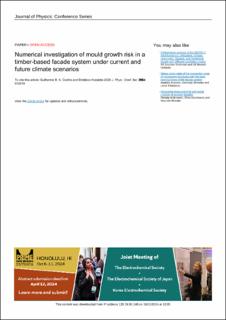| dc.description.abstract | Due to today’s sustainability concerns, we must find ways to decrease, the CO2 footprint of the products and systems that are used in buildings. The StaticusCare project, funded by EEA/Norway Grants, emerged from this need, since it aims to decrease the greenhouse gas emissions associated to the construction industry by developing a hybrid timber and aluminium based facade system that will integrate IoT sensors. A decrease of the facade’s embodied CO2 footprint of 70-75 % and of the non-renewable energy consumption to 53-56 % is expected. However, it must be ensured that this system has the necessary quality to be installed in the Nordic climates, even for future conditions. Computational models, both at the assembly level as well as at the building level, will be developed. The first level model will allow to perform thorough hygrothermal analysis of the facade system, whilst the second level model will allow to analyse the effect of the system at the building level, i.e. in terms of energy and indoor environment. In addition, this second level model will also be used to obtain the indoor conditions – i.e. temperature and relative humidity – that the first level model needs as an input to run. In order to make this study more comprehensive and, at the same time, determine how differently the facade system will perform under different climates, several representative Nordic outdoor climates will be used in the simulations. Climate change, by means of outdoor weather files, was considered, as well as the effect of moisture penetrating in the tested facade system due to air infiltration or even using timber with a high moisture content due to unprotected storage. It is determined that the tested system is able to properly dry the excess of moisture under current and future conditions. However, if the timber is not properly protected from moisture, then the situation is completely different. | en_US |

